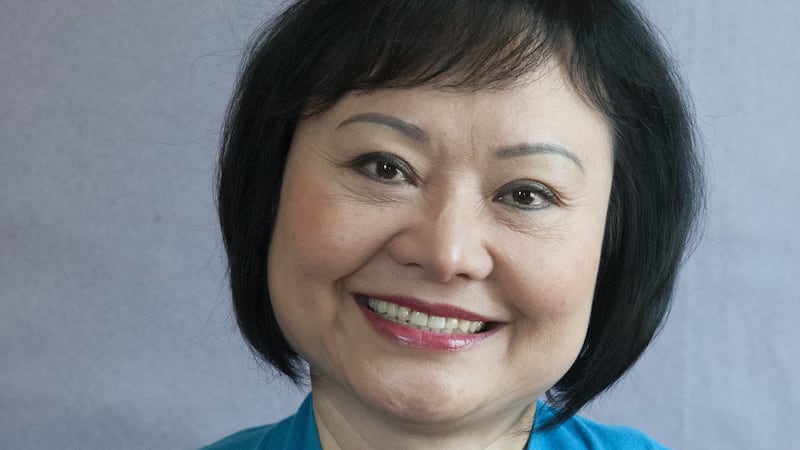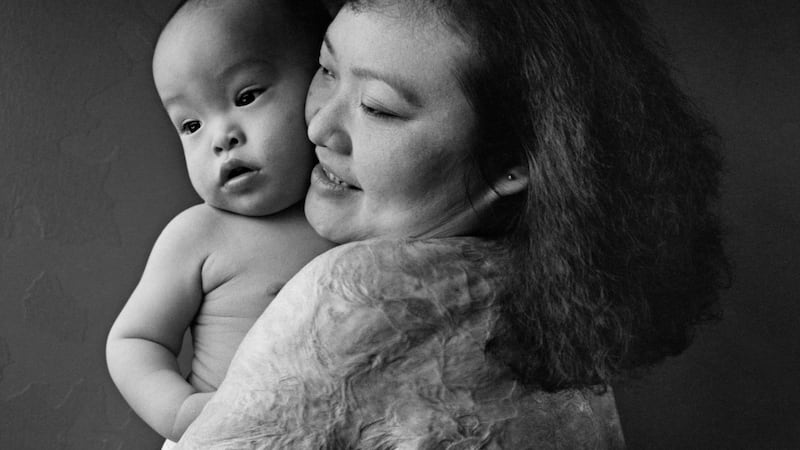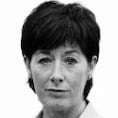It is June 8th, 1972. For 21 years, a war has raged between the communist government of North Vietnam and the government of South Vietnam and its principal ally, the US. On Route 1, the strategic supply route between Saigon and Phnom Penh, North Vietnamese forces are infiltrating the village of Trang Bang.
Terrified civilians and South Vietnamese soldiers flee as planes roar overhead and a South Vietnamese pilot, mistaking them for enemy forces, drops his payload: napalm. No one can outrun napalm, a thick jelly of petrol and aluminium salts, developed by Harvard chemists. Napalm clings to human skin, causing horrific burns.
Phan Thi Kim Phuc Oont, known as Kim Phuc, is the little girl at the forefront of the famous photograph. Kim, just nine years old, is naked, arms thrown out in agony, her face caught in an contorted wail. “Too hot! Too hot!”, she screams. She has ripped off her burning clothes as the napalm burns and shreds her tender skin, eating through the layer of collagen, ravaging a third of her body.


Most people who sustained such injuries over 10 per cent of their bodies would have died at that time. But Kim survived to become a literal poster child, first for the American antiwar movement, and, later, as the living embodiment of American imperial atrocities and evidence of the Vietnam communist regime’s enlightenment.
Cut to the present day, when Kim is scheduled to do a Facetime interview from her Canadian home. A few hours before, an email lands to say it will be audio only. “I’ll just say, they barbecued me again,” she explains later, with a tinkly laugh.
Forty-four years on, Kim is undergoing yet more procedures to control the relentless pain, triggered by scarred nerve endings that randomly misfire. “When I was growing up, the pain was so sharp, it was like I’d been cut by a knife. As I get older, the pain is different, it is deep in there and stays there.”
She has just completed her fifth laser treatment in eight months at a Miami clinic, under Jill Waibel, a dermatologist and specialist in the use of lasers for burns who is donating her services. The hope is that the lasers may also lighten the livid scars that extend from Kim’s hairline on the back of her neck all the way down to her knees, from where skin was taken for skin grafts back in 1972.
Because the scars are so old and four times thicker than ordinary skin, they cause other problems, mainly due to poor circulation. Hot weather ratchets up the pain. “I cannot sweat because there is no hair and no pores on the skin grafts,” she says. “And, can you imagine, there is no blood at all in my scars?”
The laser treatment heats the skin to boiling point to vaporise the scar tissue; the vapour is then captured by a vacuum-like hose. The microscopic holes created by the procedure also allow topical, collagen-building medicines to be absorbed deep through the layers of tissue.
Kim describes the pain of it as “10 out of 10” – the worst.
“What they do is dig a lot of holes in my scars, which leave the door open so my blood can flow into that hole . . . And when the blood gets into that hole and makes my scars soft and my body is healing itself, maybe that will ease the pain.”
She is keen to move on, to talk at length about her relationship with God, about how prayer has helped her heart to heal and forgive following her conversion to the Christian faith in Saigon, 10 years after the attack. As it happens, it was after addressing a church congregation that she was approached by Waibel’s father-in-law and first heard of the doctor who was using lasers to treat napalm burn scars.
“I am not religious; I am not political,” she says. “Religion doesn’t help me at all. But the relationship between me and God and Jesus, that changed my life.” It brought Kim physical and emotional peace “in the midst of hatred, bitterness, pain, loss, hopelessness”, when the pain seemed insurmountable.
Pain in all its debilitating forms has permeated her life, from the moment Nick Ut, a 21-year-old Vietnamese photojournalist working for the Associated Press, captured her shattering image on Route 1. Such was its power, the photograph was said to have reawakened the conscience of America. On a White House audiotape, Richard Nixon was heard wondering of the image if it was “fixed”. Even now, Kim is still incredulous at this.
“When I heard what he said, I said ‘WHAAAT? – but the whole world knows what was happening,’’ she exclaims in her heavily accented English. “I think he just couldn’t believe that little children could suffer so much.”
Some say the photograph hastened the end of the Vietnam War. Maybe so. Seven months after Ut’s picture stormed the world, the Paris Peace Accords were signed, which led to the withdrawal of US combat forces from South Vietnam.
In the meantime, it transformed individual lives. For Ut, just 21, it meant the Pulitzer Prize and World Press Photo of the Year for 1972. As importantly, he had also behaved humanely towards his subject and probably saved her life. Before delivering the film, he had taken Kim to hospital in Saigon, where she remained for 14 months and endured 17 surgical procedures.
Some months after taking the photograph, Ut stopped by Kim’s home and presented her father with a copy of the image. Kim first saw it when she arrived home and her father pulled the picture from a drawer. Her profound shock is still palpable when she recalls the questions that flooded her 11-year-old mind.
“I was thinking, ‘but I’m a little girl, I am NAKED, why did he take that picture?’ I was just a child, I felt ugly, embarrassed, and also because my cousins, my brothers , they were around that picture and they are fine with clothes on and I am not. All that difficulty, trauma, nightmare, low self-esteem, all that I had to deal with . . . ”
She was not the only one with concerns about nudity. Back at the Associated Press bureau, a major debate had ensued about transmitting a naked girl’s photo over the wire.
Ut, now 65, says: “Pictures of nudes of all ages and sexes, and especially frontal views, were an absolute no-no at the Associated Press in 1972.” It was eventually agreed that the news value overrode any reservations about nudity, with the compromise that no close-up of Kim alone was to be transmitted.
That was how Kim Phuc became “the girl in the picture” (the title of Denise Chong’s biography), the tormented child who grew into a young adult in Vietnam, wracked with physical and mental pain, full of self-loathing, hatred and suicidal thoughts. Children recoiled from her disfigurement. She was a figure of pity to neighbours. Her injured arm and hands made her clumsy, inclined to drop things.
But the wish to “disappear”, as she puts it, was not because of the pain; it was because of the picture. “The more that picture got famous, the deeper the cost to my private life,” she says now.
Recognising her usefulness as a “national symbol of war”, the Vietnamese government forced Kim to leave school and toured her around, compelling her to dress as a happy medical student, subjecting her to endless interviews with royalty, prime ministers, heads of states and visiting journalists, as well as appearances in propaganda films.
“If only they had let me continue at school,” she says, “but I had no freedom to make my own choices. Every movement of mine was under the control of the Vietnamese government, a communist country. I was just a prisoner without walls.
“Oh my goodness, I was like: ‘What’s wrong with me?’ And that filled me up with hatred. The napalm burn did not kill me, but the hatred, the people abusing me – that almost killed me”.
In 1982, when Kim was 19 and living with her sister in Saigon, she read the New Testament and turned to Christianity.
“After that I stopped asking ‘why me?’ I thought, my cousins, three years old and nine months, had passed away and a lot of soldiers had died as well. But I’m still alive, I have another chance to live.”
She also knew she was not the only suffering child in the village. “And I got burned so much, but my face and my hands are still beautiful,” she says laughing. “And so I learned to count my blessings.”
In 1986, Kim grabbed the opportunity to study in the University of Havana. Her studies once again were cut short, this time by illness, but she fell in love with a young Vietnamese student, Bui Huy Toan. They married in 1992 and honeymooned in Moscow. On the return flight to Cuba, the plane stopped to refuel in Newfoundland, and the pair sought asylum. They settled in Ajax, outside Ontario, where her parents eventually joined hem.
The couple have raised two sons: Thomas (22), just married and graduated from Bible college; and Stephen (18), who is also studying theology at a US Bible college. Her husband took a degree in theology in 2005. As members of the Baptist Church, they reach out to the Vietnamese people in their community “who are facing difficult relationships or difficult times in their lives”, Kim says.
Having avoided publicity for several years, Kim agreed to speak at the Veterans Day ceremonies at the Memorial Wall in Washington, DC in 1996. She stood before the soldiers who had rampaged through her home country and expressed forgiveness for what they had done.
“I am not involved in politics or religion. I just let them know it’s about the love of God and the love of people. That is more powerful than any weapon of war.”
On the day, she remarked that if she could talk face to face with the pilot who dropped the bombs, she would say they could not change history - when, dramatically, a note was handed to her from someone in the crowd : “Kim, I am THAT man.” He was the Rev John Plummer, now publicly collapsing into her arms, soaking up her repeated words of forgiveness.
The story of Plummer, the commander who had lived with unbearable guilt and shame and finally found forgiveness after all those years, became the subject of countless parables, featuring in books and articles with titles such as The Lost Art of Forgiveness. In fact, Plummer turned out to be a low-level staff officer who later admitted to the Baltimore Sun that he was neither the pilot nor the one who ordered the attack. He was just caught up in the emotion at the Wall that day, he said. "Whether or not he played a major or a minor role, the point is I forgive him," Kim said later.
But as long as the deep fissures of the Vietnam War or any other conflict persist, the question will be asked : has any one person the right to bestow general forgiveness on those responsible for terrible deeds? Is it really possible for one women, however grievously injured, to forgive a crime against humanity ?
When Nick Ut took that iconic photograph of the little girl, he never envisaged this was the burden she would bear. The two have become such good friends that she calls him Uncle Ut. “I am really thankful to him, and I say ‘Uncle Ut, I love you’. I pray for him every single day of my life. He is the beginning and the end.”.
The truth is that Kim could never escape Ut’s iconic photograph, so her only course of survival was to turn it into a positive. She now believes it was the reason she was put on earth. While her husband works caring for people with disabilities in a day programme, she travels the world talking about her lessons for life, about healing and forgiveness, and raising funds for her life’s mission, the Kim Foundation International, which she set up to help child victims of war.
“I believe in God’s plan,” she says. “I know my purpose . . . And so I live as a good example, giving people to understand the trials and the challenges that are always there but to continue to have hope – you can do it. I have lived so much with hatred; now I value so much the lesson that I learned how to forgive. I forgive myself. I love the people who caused my suffering.
“I honestly hated that picture, I hated myself. I asked, why me? But since I became a mother, my heart is not so much on that picture. Deep down, I say no more war, no more Kim. I never want my children to suffer like that little girl.
“So from that point of view, I really want to recognise that that picture is a powerful thing to work with me for peace. I don’t hate it anymore.”
Kim Phuc will be one of the keynote speakers at the Lismore Immrama Festival of Travel Writing 2016, taking place June 16th-18th in Co Waterford. For tickets see lismoreimmrama.com or call 058-53803
















